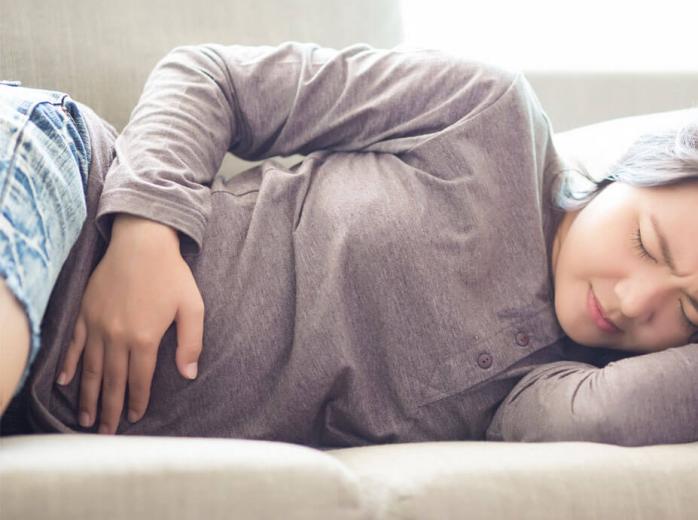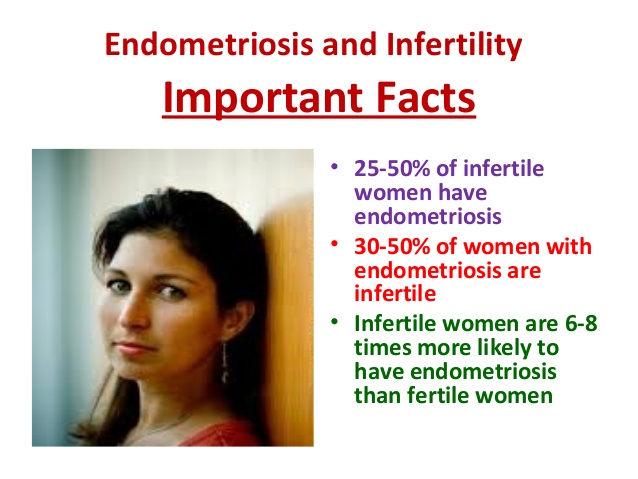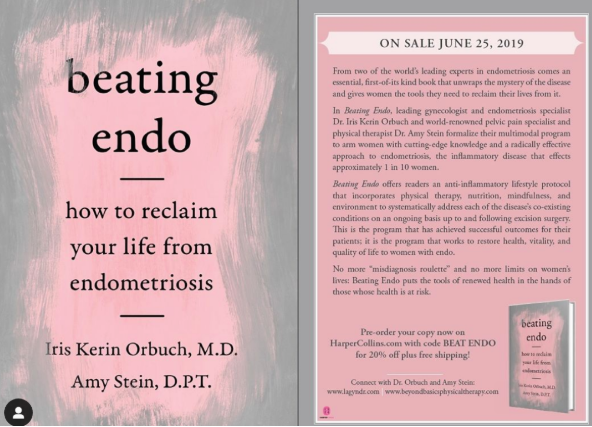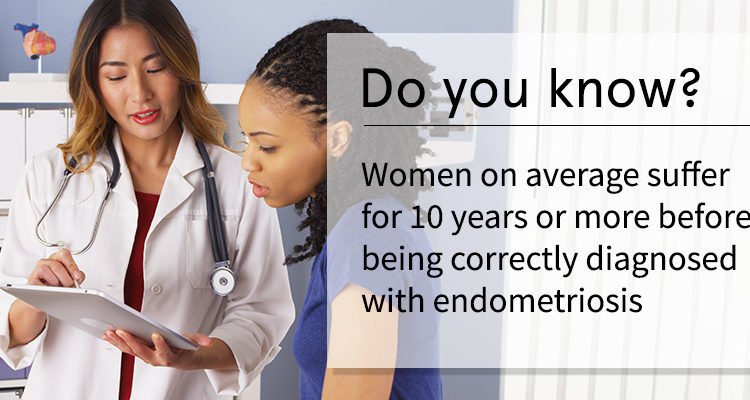Women have long been taught to accept period pain as simply a part of life. But according to gynecologist Iris Orbuch and physical therapist Amy Stein painful periods are not normal. The two women have devoted their career to helping women suffering from endometriosis — an inflammatory disease that causes chronic pain and often leads to infertility — and now they’ve teamed up to share their knowledge. Their new book ‘Beating Endo: How To Reclaim Your Life From Endometriosis’ offers the millions of women suffering from endometriosis a guide for head-to-toe recovery from debilitating pain.

Dr. Orbuch (pictured left) and physical therapist Stein.
Ahead of their book launch, they answered some of our questions about the painful disease that hits one out of ten women.
What is endometriosis?
Endometriosis, or ‘endo’ as it is commonly referred to, occurs when the lining of the uterus grows in other places like the fallopian tubes, ovaries or along the pelvis. When that lining breaks down, like the regular lining in the uterus that produces monthly menstruation, it has nowhere to go. This causes cysts, chronic pain and can lead to infertility.
What are the signs of endo that women should not ignore?
· Constipation
· Bloating
· Fatigue
· Painful bowel movements
· Painful intercourse usually with deep insertion or certain positions
· Infertility
· Right and/or Left sided pelvic and abdominal pain
· Diarrhea
· Pelvic pain during, before, after menstruation, and/or anytime during the month
· Urinary frequency, and/or urgency, and/or painful voiding
· Lower back pain
· Heavy or irregular periods

Is some pelvic pain normal even for women that don’t have endo?
NO! it is not normal no matter what. Painful periods are not normal. Revolving your work and/or social life around your period is also not normal. Endometriosis and tight pelvic floor muscles are 2 two very common causes of pelvic pain.
Tight pelvic floor muscles are caused guarding from pain, i.e. assuming the fetal position when in pain. Also, if one has bladder and/or bowel leakage, or strains on the toilet, this further tightens and shortens the pelvic floor muscles contributing to more pain. Good news is that pelvic floor physical therapy benefits most women who have been unwittingly assuming a fetal position in response to pain or straining with bladder and bowel symptoms.

What can women do to help with the pain other than popping pills?
There is a lot of misinformation out there for the proper treatment for Endometriosis. Medical treatment such as the birth control pills or newer hormonal medicines do not cure Endometriosis. Rather they simply treat symptoms while the disease continues to progress. For instance, if you suffer from heavy periods, the birth control pill can lighten your cycles, or if you suffer from painful periods, birth control pills may, if you can tolerate them, lessen the pain. Remember that your endometriosis continues to progress while on the pill despite relief of some symptoms. Excision of Endometriosis is the only treatment that removes endometriosis cells. Hysterectomy is NOT a cure or treatment, yet is erroneously recommend by many gynecologists.
Pelvic floor physical therapy can be instrumental in the healing process and can help abdominal-pelvic pain, bladder and bowel urgency, frequency, retention, incomplete emptying, and any sexual pain related to the musculoskeletal system.
Your approach includes diet — what foods are the worst Endo triggers to be avoided?
An anti-inflammatory diet is best for endometriosis. Eat organic. Stay away from processed foods and simple sugars.
Does Endo mean you can’t have kids of your own?
Sadly, 40 to 50% of women with unexplained infertility is caused by Endometriosis. With that being said, not all women with endometriosis suffer from infertility.

Why do so many doctors discount endo patient’s pain and tell them to just take ibuprofen?
Most women with endometriosis live a lifetime of invisible pain, and often go on average 10 to 12 years from symptom onset to diagnosis. Endometriosis effects 10% of women, close to 200 million women worldwide – yet they suffer in silence with painful periods, painful sex, pelvic pain, intestinal symptoms such as constipation, diarrhea, painful bowel movements, infertility, as well as urological symptoms. Since we don’t have imaging that diagnoses endometriosis, patients undergo countless ultrasounds, CT scans and other imaging which all come back ‘normal’. This leads health care professionals to tell women there is nothing wrong with them, when in fact, they truly are suffering from endometriosis.
 Historically, women’s pain is discounted and are given less quality care in comparison to men. The statistics are even worse for women of color, which is why we aim to spread awareness and education on many under diagnosed and misdiagnosed abdomino-pelvic pain conditions that effects millions of men, women and children.
Historically, women’s pain is discounted and are given less quality care in comparison to men. The statistics are even worse for women of color, which is why we aim to spread awareness and education on many under diagnosed and misdiagnosed abdomino-pelvic pain conditions that effects millions of men, women and children.
How important is seeing a physical therapist to cope with Endo and what kinds of exercises do you recommend?
Pelvic pain is more common than anyone thinks, and the number of patients we see reinforces this fact. Many women have been told it is ‘in their head’, even — to drink more wine, do yoga, as a means of a remedy to their pain. This is a real condition, and should not be brushed under the rug.
Physical therapy (pelvic PT) can help many suffering from the many pains and symptoms of Endo, including bladder, bowel and sexual function.
These are just 3 sample exercises from their book: Beating Endo: how to reclaim your life from endometriosis.

Exercise 1: Breathe.
This is conscious breathing—slow and deep. Inhale from deep down, and as you breathe in, visualize the air expanding your belly outward and your ribs to the sides as you let your pelvic floor “open” till the air fills your lungs. Take from three to five seconds for the inhalation. Pause one second. Then exhale for even longer—from four to six seconds—from the top down, letting the air flow out of your lungs, then relaxing your ribs, belly, and pelvic floor.
Pause one second. Repeat.
Do five repetitions.

Exercise 2: Pelvic Floor Drop
The pelvic floor drop copies the sensation of relief you feel when you urinate—in particular, the sort of blanket of relaxation you feel when the need to urinate has been delayed and has become somewhat urgent and you are finally able to let go. So this is an exercise that is as much mental as physical; it is your brain, not your muscles, that goes to work here. Do the drop standing, sitting, or lying down—whatever works.
Start by relaxing your body and closing your eyes. Breathe in consciously and deeply, as in Exercise 1. Exhale slowly, and as you visualize your breath descending and being pressed out of your pelvis, let go of your pelvic muscles—just drop them—and “see” the air flow out of your body.
Do the pelvic floor drop with deep breathing first thing in the morning, twice an hour throughout the day if you can, and whenever you feel any pelvic pain or increased bladder or bowel urgency or frequency. In fact,if and when you feel tension in any part of your body, this exercise can help release it.

Exercise 3: Pelvic Floor Stretch
Do this stretch squatting or lying down, whichever is possible or easiest for you.
If you are able to squat, stand with your legs apart, feet extending a few inches beyond the shoulders, toes turned slightly outward, and, keeping your back as straight as possible, squat down till your rear is three to five inches off the floor. Relax into the position, arms resting inside your thighs, hands together or relaxed to the floor, as you do from six to eight deep breaths. Again, keeping your back straight, place your hands on your knees and push yourself up.
If you do the stretch lying down, lie on your back on a firm surface, bring your knees up to your chest and the soles of your feet together. Use your hands to hold your knees flared outward. Stretch the position gradually and progressively for six to eight deep breaths. Do not bounce, and do not push hard.
Two to three repetitions twice a day.
Get your copy here.

